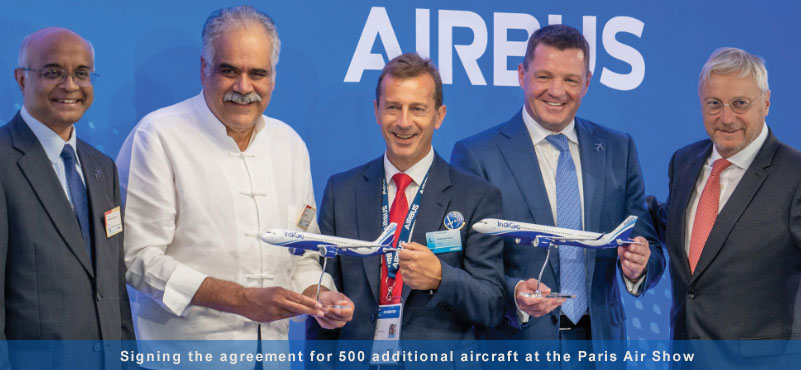The recently released World Travel & Tourism Council: City Travel & Tourism Impact 2018 – October 2018 report has given interesting insights into global tourism trends. It comes as no surprise that Chinese cities will continue to dominate as destinations with the fastest growing travel and tourism GDP, for the near future. Much of the global growth is also being fuelled by the Asia-Pacific region.
From an Indian perspective, Delhi has been ranked seventh, and Mumbai 8th, in the list of global cities generating employment from travel and tourism. Mumbai is also the world’s tenth fastest growing city in terms of direct travel and tourism GDP growth from 2007-17. It is an indication of tourism assuming a greater importance in national growth – which should come as sweet music for industry stakeholders.
The biggest takeaway, however, is the rise of cities as centres of travel and tourism, attracting as much as 45% of the global international travel. Cities are playing an equally important role in driving traffic into the hinterland. Their importance as gateways has assumed a greater significance.
Lastly, much of the global growth is being sustained by the leisure and domestic segment.
Here are some excerpts from the World Travel & Tourism Council: City Travel & Tourism Impact 2018 – October 2018 report:
Cities represent 45% of global international travel
With over half a billion trips taken to cities annually, metropoles have become catalysts of global travel, driving significant increases in travel and tourism within city boundaries and for wider country destinations. In effect, in the past decade, travel to city destinations has grown more rapidly than total international travel demand. This growth directly generated $625 billion or 6.7% total GDP across the 72 cities in this study, while the industry generated 3.2% of global GDP.
Emerging and developing markets continue to rise
In the past decade, there has been a clear shift from North to South and West to East. This is particularly visible in the rankings of top global city destinations by GDP, with ten of the top 20 largest cities by market size and seven of the top 20 by GDP contribution located in the Asia-Pacific region. This is even more apparent when looking at the fastest growing cities in terms of direct Travel & Tourism GDP over the past decade, where all top ten cities are in emerging and developing countries, including Chongqing, Shanghai, Lagos, Tehran and Mumbai among others. While the majority of these cities are expected to remain top performers in the coming decade, with China leading the way, a slowdown in growth is expected.
Domestic and leisure travel lead the way
Despite the buzz around international travel, domestic travel represents the vast majority of global Travel & Tourism expenditure, amounting to 73% of the total vs. 27% for international travel. Domestic contributions can run as high as 85% or 90%. In Shanghai and Beijing for instance, the domestic share of Travel & Tourism GDP exceeds 87%. Conversely, cities such Macau and Dublin rely primarily on international demand, with the international share of tourism accounting for 97% of tourism GDP.
Looking ahead, the proportion of international travel is expected to rise with the rapid growth of emerging markets. Similarly, leisure travel significantly outweighs business travel in terms of expenditure, accounting for 78% of total global expenditure. Travel and Tourism’s contribution to city GDP is significantly higher in leisure driven cities, in turn leading to increased reliance on the sector. In effect, the eight highest ranked city destinations in terms of Travel & Tourism share of total GDP are all leisure destinations, with Cancún leading the way at nearly 50% of its GDP. Larger cities, and capital cities tend to host other important sectors, including financial and business services, which make much larger contributions to GDP. As such, these cities may have large and thriving Travel & Tourism sectors, but as a share of GDP the sector has a smaller impact.
Chinese cities will remain among the fastest growing destinations
Except for Marrakech, the cities in the top ten ranking of fastest growing Travel & Tourism GDP over the coming decade are in the Asia-Pacific region, with an overwhelming majority in China. Chinese cities are expected to continue to grow strongly and dominate the rankings, with average Travel & Tourism GDP growth of 7.8% per annum over the period 2017-27. As the Chinese middle class continues to expand and the travel market matures, lower percentage growth rates will become a reality, but this will still represent larger incremental volume increases. Continued investment and increasing connectivity will aid city growth, but to a lesser extent than in prior years.
New Delhi’s growth is expected to be largely driven by an increase in domestic demand for business and leisure travel activity; supported by demographic expansion and an emergent middle class. Jakarta is also experiencing an upturn in demand related to growing national prosperity. In line with Vietnam’s goal to grow visitor numbers, it is expected that Ho Chi Minh City’s international share of total expenditure will continue to rise at 7.3% pa over the next decade.




































